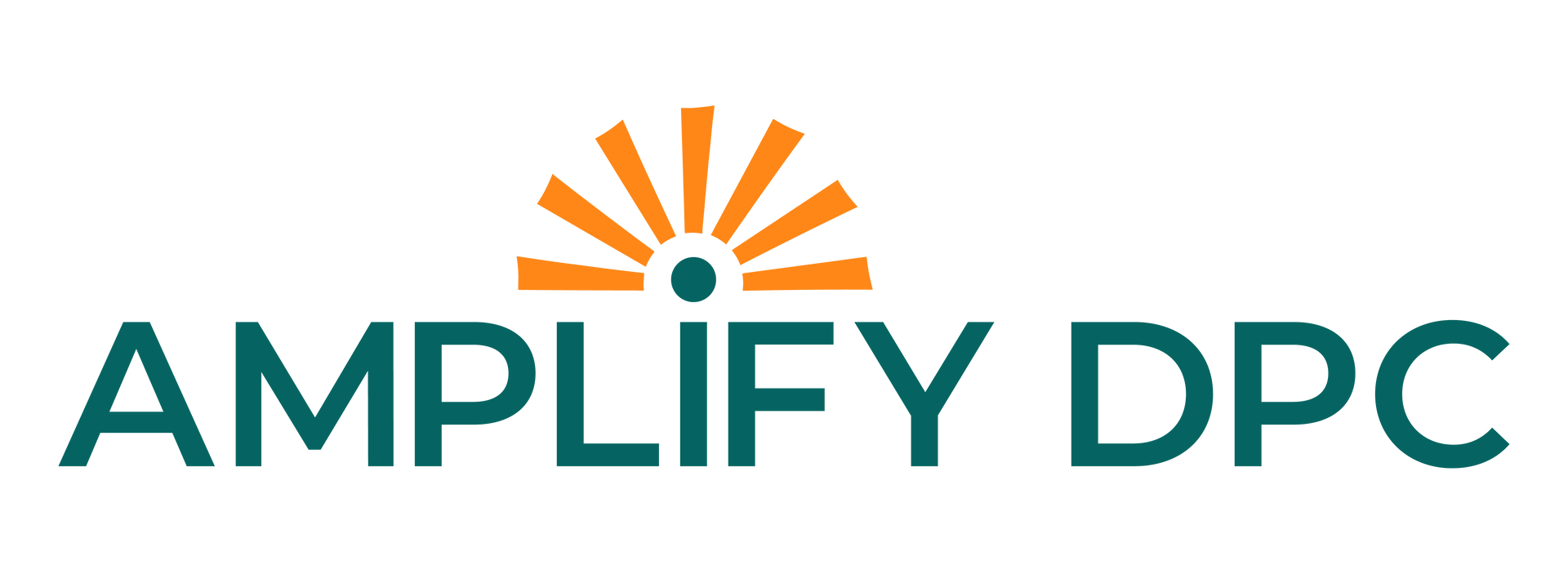10 Things You Can Do to Retain Members for Your DPC Practice
Acquiring new patients is more expensive than ever.
The trend isn’t slowing down. Paid ads are saturated. Search competition is fierce. And every health brand is shouting online to be heard.
This is where member retention becomes your superpower.
Keeping the patients you already have doesn’t just reduce your Customer Acquisition Costs (CAC), it creates stability, increases lifetime value, and builds the kind of long-term trust that drives growth.
Below are specific, actionable strategies you can implement to keep your members happy, loyal, and eager to stick around.
1. Make Same-Day or Next-Day Appointments a Core Selling Point
Immediate care is one of the biggest selling points DPC has over traditional care, but don’t assume your patients remember it. Remind them once, twice, and over and over again.
People get used to the convenience, but they forget it’s not the norm everywhere. So what do you do? Highlight it everywhere! Put it in large print on your onboarding. Mention it in your monthly emails. Add a banner in your member portal. Say it again when they come in for a visit.
2. Frequently Check in with Patients, Even When They’re not Sick
Most patients only hear from a clinic when they owe something or it’s time for a scheduled visit.
Flip that.
Set a reminder to check in every few months, especially for those you haven’t seen in a while. A quick, unexpected message can leave a lasting impression.
Add their name. Reference something you remember about them. The more personal the message feels, the more it helps to build trust.
Amplify DPC makes this easy by using workflow triggers that let you automate personalized check-ins based on patient activity—or inactivity—so you can consistently re-engage members in a personalized manner.
3. Personalize Health Reminders Based on Age, Risk, or History
Reminders are a great way to keep patients engaged, but only if they feel relevant.
If you’re blasting out the same “Book your annual physical” message to everyone, it’s going to be ignored or get automatically flagged as spam.
That’s why personalized health reminders are so effective when they’re tied to specific life stages or medical needs.
Use your EHR or DPC software to create audience segments based on:
- Age group (e.g., 20s, 40s, 60+)
- Gender and reproductive health needs (e.g., pap smears, mammograms)
- Existing conditions (e.g., annual A1C checks for diabetic patients)
- Time since last visit or specific lab work
Then craft reminders that reflect where they are in their health journey:
- “Hi Jane, just a quick reminder—it’s been a year since your last pap smear. If you’re ready to schedule, we’re here when you are.”
- “Hi John, we last checked your blood pressure in April 2023. If you’d like to come in for a quick check-in, let us know what works for you.”
With tools like
Amplify DPC, you can automate these reminders while keeping the tone human and the timing appropriate. When patients get messages that feel thoughtfully timed and genuinely relevant, they’re more likely to follow through and stay connected to your practice.
4. Remember Their Birthday (and Other Milestones, Too)
People rarely expect their doctor’s office to remember their birthday, which is exactly why it works.
A short, thoughtful birthday message can go a long way in reinforcing the relationship.
It doesn’t need to be elaborate:
“Happy Birthday, Ellie! Wishing you good health and a great year ahead—thank you for being part of our DPC family.”
You can set this up to be automated through a
marketing automation software like Amplify DPC, but it should always include their name and come across as genuine, and not templated or robotic.
Birthdays aren’t the only opportunities. Celebrate milestones like:
- Their first year as a member
- Lab improvements (e.g., lower A1C or cholesterol)
- Completing a health goal they mentioned during a visit.
5. Encourage Happy Patients to Leave Reviews Before the Unhappy Ones Beat Them to It
Most people won’t think of leaving a review after a good experience.
A huge percentage will, though, if their experience was exceptional.
But if they had a terrible experience? You can count on a review. Every time.
That’s why you can’t wait and hope for feedback. You need to proactively ask for feedback from patients who just had a great visit, got quick help, or finally feel better after a chronic issue.
When you do ask, make it easy and remove friction. Include a direct link to your Google Business Profile or send a QR code they can scan after a visit. Keep the message friendly and direct to the point.
Avoid offering any kind of incentive in exchange for a positive review. Promising a discount, freebie, or future perk in exchange for a review can not only be flagged as solicitation by platforms like Google, it also undermines the credibility of their feedback.
More importantly, make sure the message accompanying your review requests is HIPAA-compliant. Never reference specific treatments, diagnoses, or even appointment types.
A simple and compliant example might look like:
“Thanks for stopping by today! If you’ve found value in your experience with us, we’d love it if you left a quick review: [link or QR code]”
6. Create a Thoughtful New Member Onboarding Experience
Retention begins the moment someone signs up. Cancellations can happen early, often because new members aren’t sure how or when to use their membership.
They’re unclear on what’s included, what comes with extra costs, whether they can text you directly, or if they’re getting value out of the membership fee.
So you have to bridge that gap early through a seamless onboarding process. Build a simple, but intentional process that could include:
- A welcome email with contact info, FAQs, and what to expect
- A short “how to use your membership” guide (PDF or video)
- A one-on-one welcome call or message from the provider or team
- Instructions on how to book, cancel, and message you
- Reminders about same-day or next-day access (they forget!)
Customize your onboarding process based on what you already offer—and make it effortless for members to reach out with questions from day one.
7. Respond Quickly—Even If It’s Just to Say “Got Your Message”
You don’t always need to have the full answer right away. But patients do need to know you’ve read their message.
When someone sends a message, whether it’s through your patient portal, website contact form, SMS, or email, the worst thing you can do is leave them hanging. Even a quick, automated reply like: “Got your message! I’ll take a look and get back to you shortly.”
… is often enough to ease anxiety and reinforce trust. Timely communication signals that you’re present. And when patients feel acknowledged, they’re less likely to grow frustrated or start questioning whether they should explore other options, including your competitors.
8. Create and Publish Free Content That Solves Your Client’s Problems
One of the most effective ways to build trust and retain members is by offering free value even before they ask for it.
Your patient base isn’t one-size-fits-all. It’s made up of people at different ages, with different health goals, lifestyles, and concerns. That’s why creating content for broad, generic audiences doesn’t work. You need to tailor your messaging to specific types of real buyer personas so it actually resonates.
Let’s say you want to reach someone like Sarah, 42, who is noticing gradual weight gain and considering weight loss support.
Create content that speaks directly to what she’s going through—like a short video on hormonal changes, a blog post on metabolism in your 40s, or a free webinar on realistic, sustainable approaches to weight management.
Content like this feels relevant, not generic—and that’s what keeps people coming back to your practice because you consistently provide them with something helpful.
Another example: You’re offering employer-sponsored DPC memberships and want to reach someone like Jenna, a 38-year-old office manager at a 12-person accounting firm.
She’s not looking to overhaul their entire benefits structure—but she is looking for a more affordable, practical way to offer basic healthcare to her team without the overhead of traditional insurance plans.
In this case, create content that explains how DPC can work alongside or instead of traditional coverage, emphasizing things like:
- No co-pays or surprise bills
- Access to same-day appointments
- How it helps with recruitment and retention for small businesses
- Real cost comparisons over the course of a year
A one-pager, explainer video, or downloadable guide that breaks down “DPC for Employers” in plain language could help Jenna understand how DPC fits into her existing workflow—and why it’s a benefit her team will actually use.
9. Train Your Staff to Consistently Deliver Exceptional, Patient-Centered Experiences
Even the best medical care can be overshadowed by one frustrating encounter at the front desk or a delayed response to a simple question.
Every interaction, no matter how small, shapes how a patient feels about your practice. That’s why your team should be trained not just in procedures, but in how to deliver a consistently smooth, respectful, and responsive experience.
That includes:
- Answering calls and messages promptly and warmly
- Avoiding billing mistakes and clearly explaining any charges
- Following up when they say they will, especially on lab results or next steps
- Knowing when to escalate something to the provider, rather than deflecting
- Being attentive and responsive, even when the concern seems minor
- Ensuring every team member is knowledgeable about your services and how the membership works
- Adapting to complex or sensitive situations with patience and clarity
- Showing—through words, tone, and actions—that they genuinely care about the patient’s well-being
A patient can love their provider and still churn because of issues with scheduling, miscommunication, or confusion around billing.
It’s not always the big things that break trust—it’s the repeated small ones.
Investing in team training ensures that every point of contact reflects your values and keeps your patients feeling confident in their choice to stay with your practice.
10. Make Scheduling an Appointment Easy
In a DPC model, access is one of your biggest selling points.
But if booking an appointment feels confusing, clunky, or time-consuming, that advantage disappears fast.
The process should reflect what your membership promises: convenience and responsiveness.
That means:
- Allowing patients to fill out a simple form online without calling
- Making it clear how to schedule: phone, portal, text, or all three
- Sending confirmations and reminders automatically
- Avoiding long intake forms
- If an appointment needs to be rescheduled due to a clinic emergency or unexpected issue, notify the patient promptly, explain briefly, and offer a convenient alternative.
Smooth, clear scheduling reinforces the value of membership—and helps patients feel like their time matters just as much as their health.
Final Thoughts
Retention in a DPC practice is about consistently proving that membership means something more. The most effective practices don’t wait for patients to reach out. They anticipate needs, they remove friction.
And they build a culture where every touchpoint, from scheduling appointments to billing reinforces belonging. Because in a membership-based model, your success is tied directly to how long someone chooses to stay—not just whether they signed up.
Amplify DPC helps make that consistency possible—with built-in automation for follow-ups, check-ins, reminders, and more, so you can stay connected to members without letting anything slip through the cracks. Book a free 60-minute demo today and see it in action!






